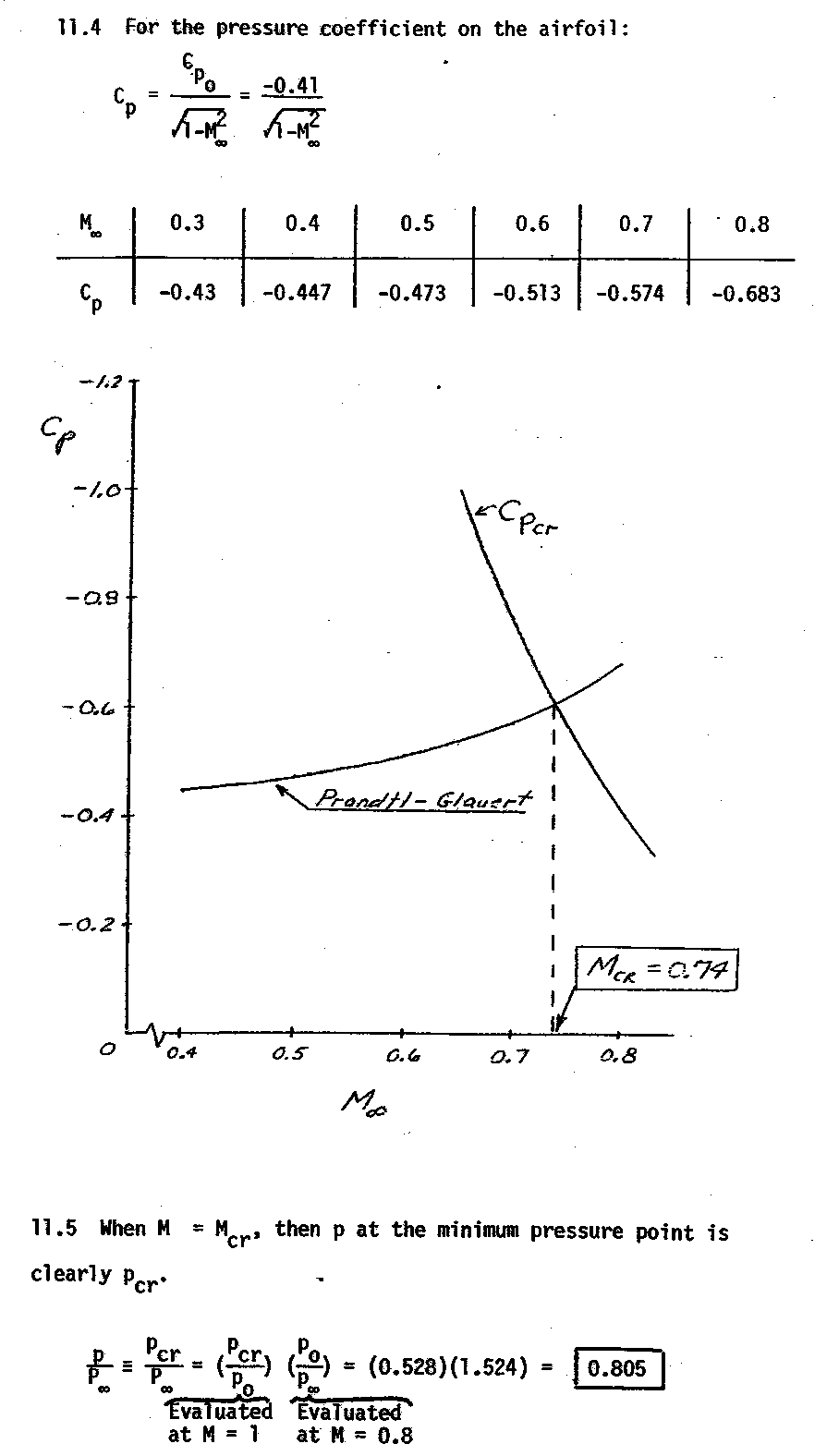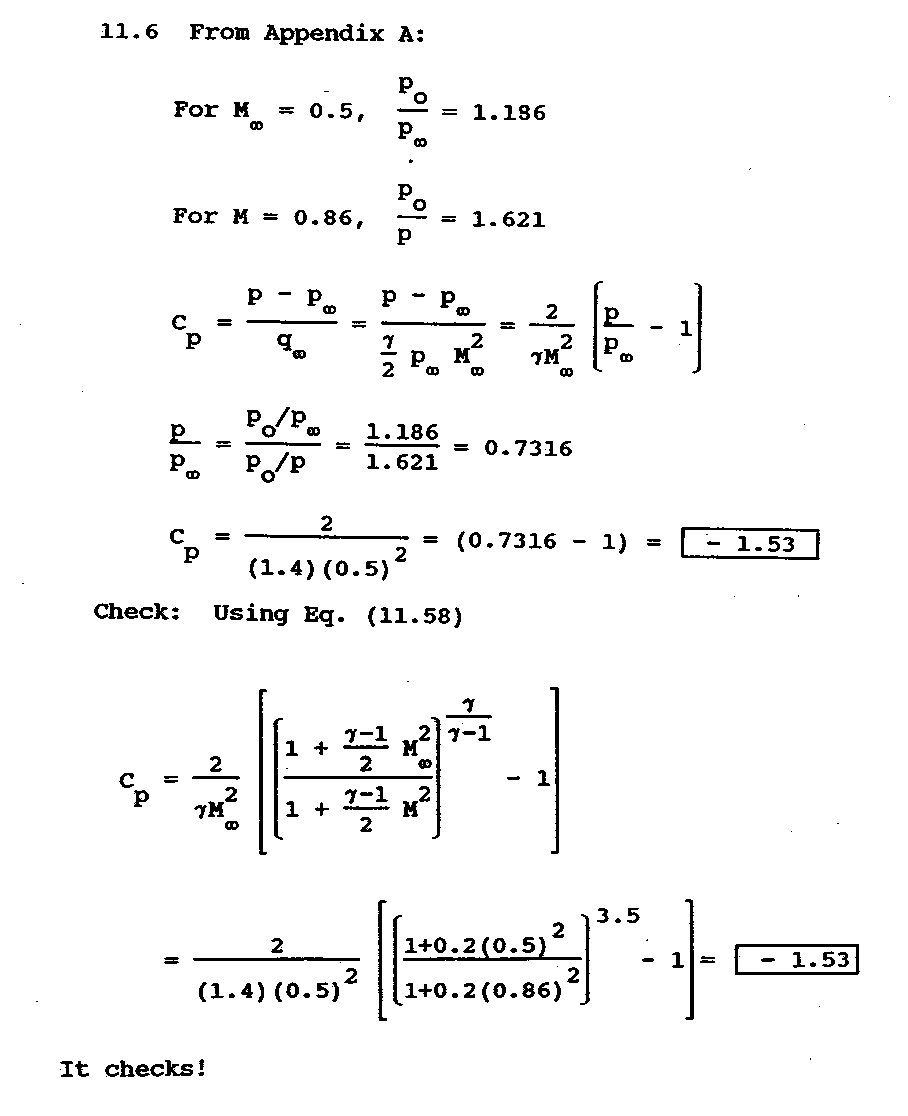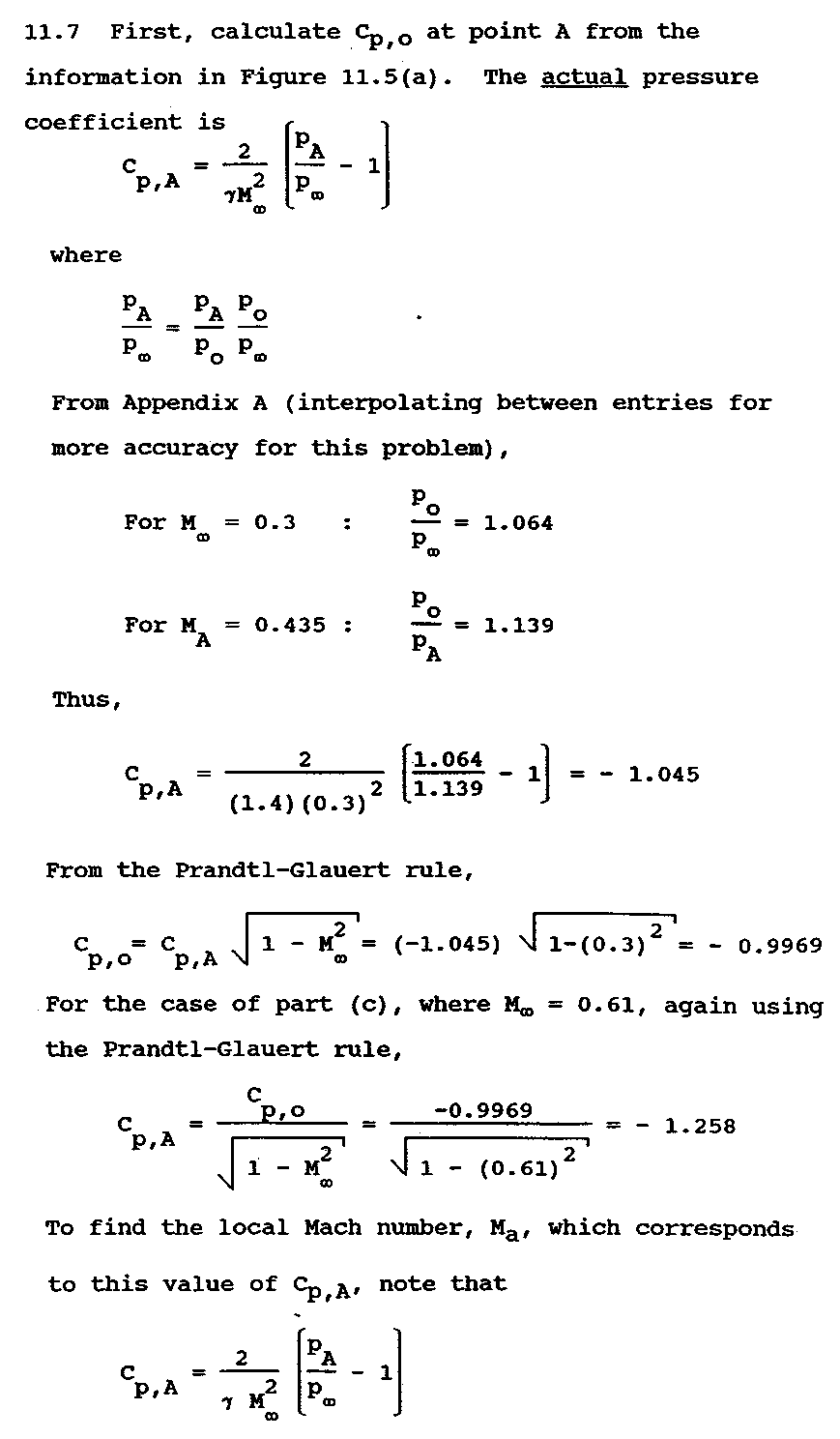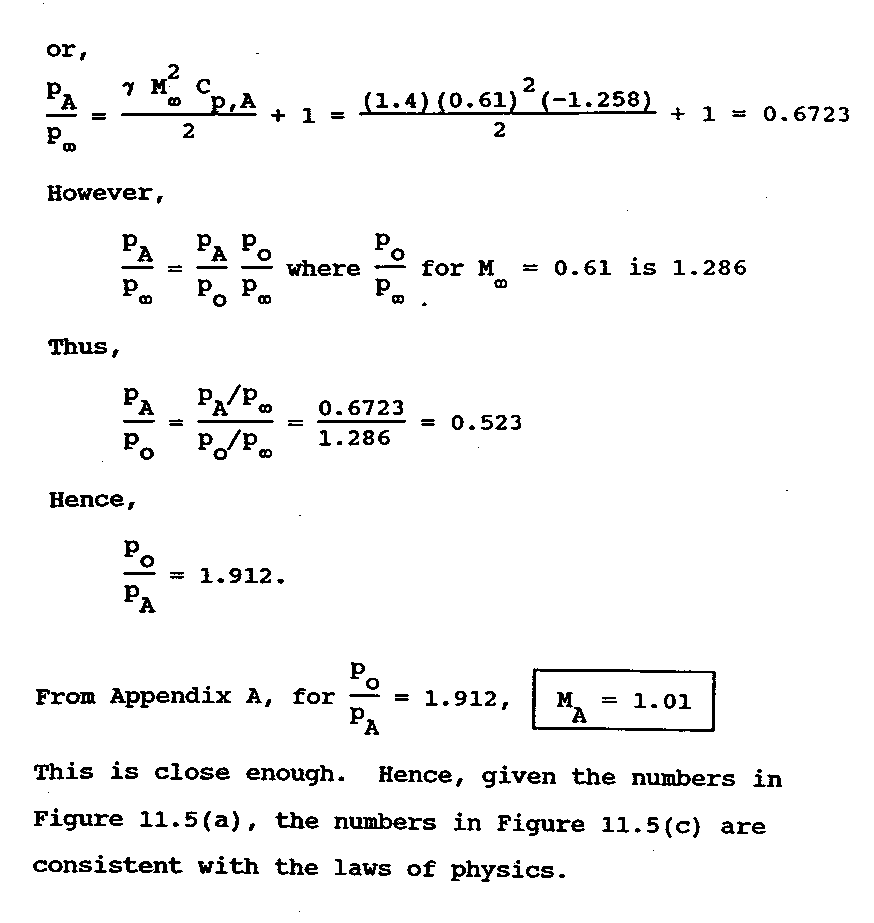MAE 3303 Aerodynamics of Compressible Flow
Homework 10 Solution
Answers to Study Questions
- What is the definition of the critical Mach number?
ans: It is the free-stream Mach number for which the maximum local Mach
number is exactly one.
- Why is the critical Mach number of interest?
ans: It tells us the flight Mach number where locally supersonic flow, and
hence wave drag begin to exist.
- Will the critical Mach number increase or decrease as the lift
produced by the airfoil increases?
ans: Decrease. More lift implies more flow acceleration and therefore
greater difference between the free-stream and local Mach numbers.
- Will the critical Mach number increase or decrease as the airfoil
thickness increases?
ans: Decrease. Increased thickness implies more flow acceleration and
therefore greater difference between the free-stream and local Mach numbers.
- What is meant by the drag-divergence Mach number?
ans: The Mach number where the drag coefficient begins to increase rapidly
with increasing Mach number.
- List two factors that contribute to the rapid increase in drag around
Mach 1.
ans: Wave drag and pressure drag due to separated flow. Shock waves are
ultimately responsible for both of these effects.
- Typically by what factor does the drag increase as an aircraft passes
through Mach 1?
ans: Roughly a factor of 10.
- What is meant by the ``sound barrier''? Does it really exist? Explain
your answer.
ans: The rapid rise in drag near Mach 1 was once thought to be insurmountable by certain aerodynamicists. We know now that, with enough
power, an aircraft can pass through Mach 1.
- State the area rule for transonic flow.
ans: Two aircraft with the same longitudinal distribution of cross-sectional
area will have the same zero-lift wave drag.
- Does the area rule require a widening or thinning of the fuselage in the
vicinity of the wing? Explain your answer.
ans: Drag will be minimized if the fuselage is thinned in the vicinity of the
wing in an effort to keep the cross-sectional area nearly constant.
- By what factor can the peak drag near Mach 1 be reduced through use
of the area rule?
ans: By roughly a factor of 2.
- What is a supercritical airfoil?
ans: One that is specially designed to weak shocks (and hence modest drag)
for a Mach numbers slightly above Mcr.
- What is the advantage of a supercritical airfoil?
ans: The drag-divergence Mach number is closer to 1 than for conventional
airfoils, thus the aircraft can cruise at a higher transonic Mach number.
- Why does the supercritical airfoil have a concave region on the lower
surface near the trailing edge?
ans: In order to offset the loss in lift due to negative camber on the
forward 60% of the airfoil.
- How will the quarter chord pitching moment coefficient for a supercritical airfoil compare with a conventional airfoil?
ans: The moment coefficient for the supercritical airfoil will be
greater (in magnitude) since it carries more load near the trailing edge.




File translated from TEX by TTH, version 2.00.
On 8 May 2000, 16:22.




